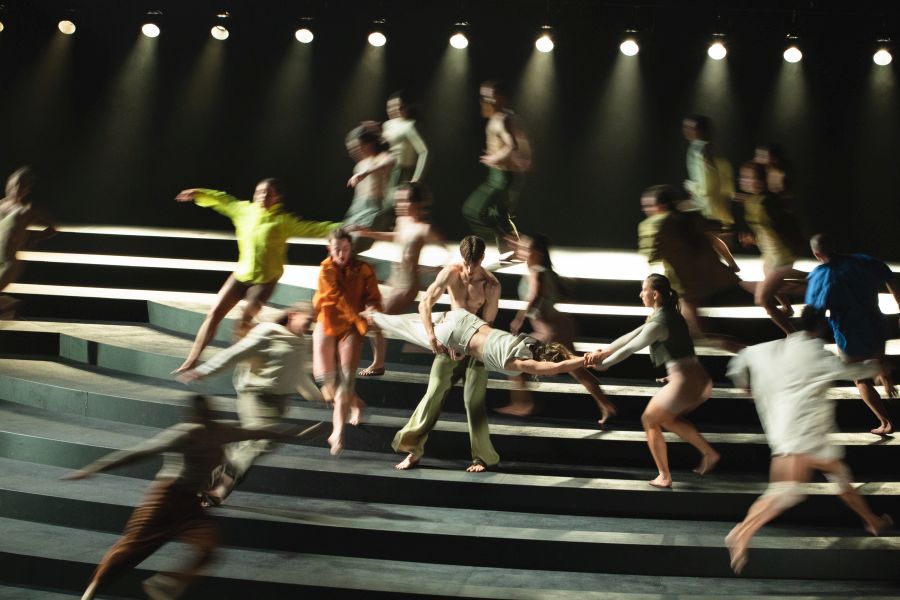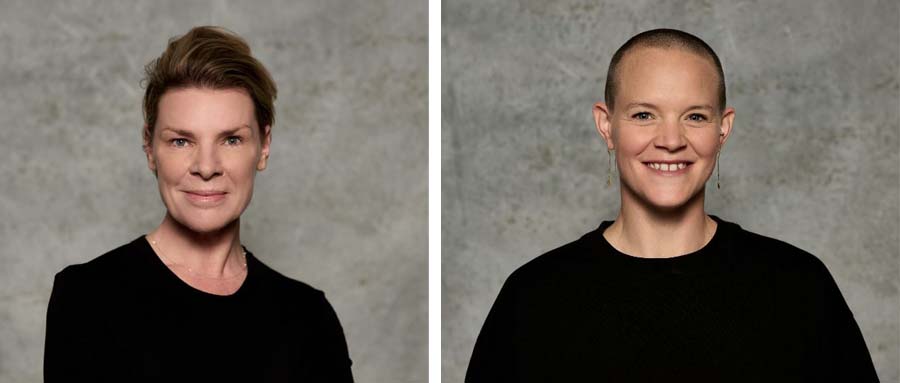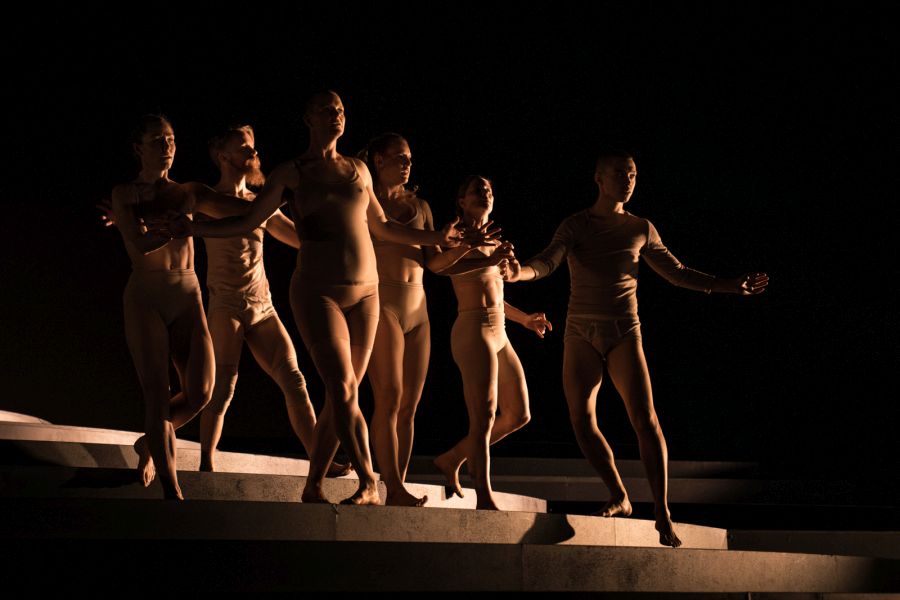Recently, the Australian dance company, Co3 contemporary premiered its work Architect of the Invisible to packed houses in Perth, and audiences saw its cast of 23 dancers stretched to their limits of strength and endurance.
It’s a work that imaginatively reconfigures Dante Alighieri’s Divine Comedy, journeying through worlds of darkness and haze, as led by its throng of performers who pulse across its multi-levelled stage.
The piece commands attention for these reasons alone, but last week audiences were talking about it for a different reason altogether – and that is because one of its female dancers is visibly pregnant.
Architect of the Invisible cast member Ella-Rose Trew is 30 weeks pregnant, and the story of her pathway to perform in the piece is a sign of how far the dance sector has come in recent years to move away from rigid ideas around what female dancers’ careers can look like.
Supporting individual needs as part of professional careers
When Trew discovered she was pregnant with her second child in early 2023, she was also in the throes of a second stage development for the company’s next major work Architect of the Invisible.
‘In those very early days [of pregnancy] you don’t quite know what could happen,’ Trew explains. ‘So it wasn’t until I was 14 weeks pregnant that I started telling people, and that was when I told Raewyn [Hill, Co3’s Artistic Director and co-CEO].’
At that moment, the company was full of congratulations for Trew and her partner, while at the same time being mindful of the questions arising around how her pregnancy would affect Trew’s role in the next major season.
For Raewyn Hill, the decision of whether or not Trew would continue as a cast member was primarily about supporting the dancer’s safety, as well as about whether Hill’s artistic vision for Architect of the Invisible could include a pregnant body.
‘For me, the desire was there to allow Ella to continue with the project,’ Hill says. ‘But there were some unknowns in the beginning, because I knew I wanted it to be a fast work, and I felt – and I still feel – great responsibility around the safety of Ella and her baby in those [staging] conditions.’
After carefully considering the scenario from these angles, Hill realised she could find ways to make it work.
‘It actually ties to the [themes] of the work really well, because part of the piece is about being the individual, and being celebrated for being the individual within the group,’ she explains.
‘But I just needed some time to think through what having a pregnant body within the work would mean for it from a dramaturgical point of view.
‘Ultimately, what I’ve done is to shape Ella’s role to suit the energy she brings to it as pregnant dancer,’ she says.

What can a pregnant dancer’s body can do
While Trew’s presence in Architect of the Invisible does indeed integrate seamlessly into its larger whole, for some in the audience, seeing a pregnant body in rapid motion is noteworthy, and is not something they are used to.
Common audience encounters with pregnancy on stage may revolve around “a pregnant character”, or be associated with more limited, background roles. Many in the audience had never before seen a pregnant dancer in a physically demanding dance role.
Trew says that while she knows her pregnancy has drawn attention from some, she is keen to raise the visibility of pregnant dancers and to normalise the practice within the sector.
‘In many ways, it’s a very personal thing and it’s not going to be the same for every pregnant dancer,’ Trew says. ‘But for me, I know my body so well, and I work with it every day. So, I feel very comfortable continuing to dance and perform.
‘I’m seeing my GP regularly, and my doctor has no concerns about my continuing to dance,’ she continues. ‘Obviously, if I start to change or feel something isn’t right, then we will reassess, but she was really happy to write me a medical certificate saying I could continue dancing, and she has been very supportive.’
Read: Pathways for artists
While Trew’s role is barely different from her fellow dancers on stage, there are a few things she and the company have decided she does differently.
‘I am not performing doubles [matinee and evening performances on the same day],’ Trew explains. ‘That was a decision that was made very early on, and luckily the work can be modified to cover my role without me in it.’
Instead of 23 dancers on stage for those shows, there are 22, with various dancers filling in Trew’s parts at different times in the work.
‘There are also a few times in the piece when the dancers are continuously running across the stage,’ continues Trew. ‘The audience wouldn’t notice, but I skip a couple of rounds in those parts to rest. Otherwise, I’m doing everything the others do.’

Widening viewpoints and shifting industry culture
While Trew and Co3 have not stepped into this terrain casually, both dancer and company want to raise the visibility of pregnancy in dance and help shift historical perceptions around what dancers’ careers can look like.
Trew credits some close peers within the WA dance community and other local artistic directors for supporting her to follow this path.
‘I danced in Laura Boynes’ work Equations of a Falling Body when I was 30 weeks pregnant with my first child, and then at 33 weeks pregnant in Emma Fishwick’s work Slow Burn,’ Trew explains.
‘Those weren’t public performance seasons, but they were full-length works performed to producers and festival directors.
‘So I have done it before, and it means I’m not charting this path alone, because artists like Laura and Emma have been supporting me with these opportunities for some time.’
Hill agrees with Trew, saying that larger networks of support are vital to help shift professional dance practices and support dancers through different stages of their careers.
‘When I was a young dancer you would never see people’s children with them on tour, or in the studio,’ Hill says. ‘But from the beginning of Co3 we’ve been proactive about bringing children and families into our spaces.’
Read: Ballet on the road: what goes into a regional ballet tour
At the moment, Hill says there are a number of dancers and Co3 staff who have young children and she is proud that the company has built-in processes to support them.
‘I love having the kids around [in the studio],’ she says. ‘Children bring an honesty to the environment, and I love that this is an area where Co3 is creating change, and that we are keeping that conversation alive around how we can do things differently.’





